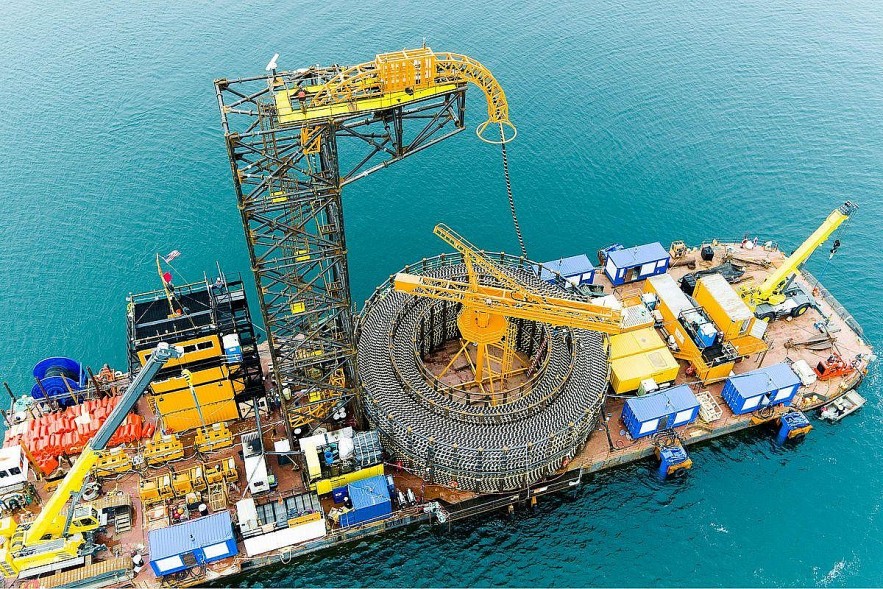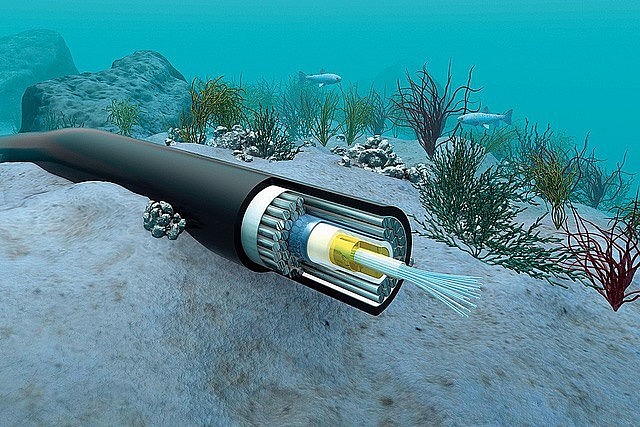 |
| Photo: vpdf.org.vn |
In the region, there is a great power competition that can result in changes to submarine cable systems and the balance of power among countries in the region.
Some Southeast Asian countries have the potential to become hubs for new trans-Pacific networks, while others may be left behind and unable to connect to major cable systems.
Submarine cables – a new competitive arena in the East Sea
Submarine cables are now a major concern for the US and China, alongside areas such as silicon chips, rare earths, 5G, AI, space, navies, and air forces.
US strategy
In the context of technology separation between the US and China, the US government, under President Trump, launched the Clean Network program to prevent US submarine cable projects from using Chinese technology.
The US also prohibits foreign competitors from accessing US goods and technology to develop undersea cables.
This is also a step to reduce the possibility of China using submarine cables to collect data or destroy strategic assets in the event of a conflict.
Strategically, this is an effort to restrain China from becoming the dominant global manufacturer of advanced submarine cable technology.
Subsequently, the US intervened in private cable projects to prevent Chinese telecommunications companies from winning cable construction contracts. This forced them to reroute or eliminate cable routes that could directly connect the territories of the two countries.
In fact, the US blocked four trans-Pacific cable projects planned by Google, Amazon, Apple, Meta, and Microsoft, which were intended to be located in Hong Kong, China. This was due to concerns about the risk of national data exposure and interception by China.
Instead, Facebook and Google are building Apricot, the first intra-Asia submarine cable, avoiding Hong Kong and bypassing China and Vietnam.
The 12,000 kilometer submarine cable will connect Japan, Taiwan, Guam, the Philippines, Indonesia, and Singapore, but it does not include Malaysia. It is considered a cornerstone of America’s competition for dominance in the global Internet.
China’s strategy
Since the 1990s, the Chinese People’s Liberation Army (PLA) and China’s Ministry of Information Industry have focused on developing submarine cable technology.
In 2002, the PLA used the country’s own undersea cable laying system and deployed fiber optic cable laying ships in 2015. Gradually, China began to participate in the international market.
China’s efforts to promote its undersea cable network are part of the “Digital Silk Road” initiative, which aims to enhance connectivity between China and more than 130 participating countries. It is also part of the “Made in China 2025” plan, which aims to capture market share in strategic sectors, including a goal of 60% of the global market for optical transmission equipment.
China has imposed new procedures and delayed the licensing, construction, and repair of submarine cables in waters claimed by China, citing national security reasons.
China’s delays in approving new cable installation projects significantly impacted the implementation of two projects, SJC2 (Southeast Asia Japan Cable) and ADC (Asia Direct Cable).
This delay may be China’s response to US efforts to exclude Chinese telecommunications companies.
Overall, China is using submarine cables as a policy tool to reshape the digital map of Asia.
China also uses cable laying activities to assert its presence in the waters it claims as its own.
Trend of countries and large corporations building cables to avoid the East Sea
 |
| A submarine cable. Photo: VNS |
As undersea cables become a battleground for US-China competition, major technology and telecommunications companies are facing numerous risks and delays in the construction of cable routes in the East Sea.
Over the past 2-3 years, these companies have encountered difficulties in obtaining licenses, especially for territorial waters claimed by China. Thus, minimizing these risks has become a top priority for new projects.



